A block of mass m is kept over another block of mass M and the system rests on a horizontal surface. A constant horizontal force F acting on the lower block produces an acceleration F2(m+M) in the sytem. The two blocks always move together. Consider displacement d of the system.
a. Find the work done by friction on bigger block.
b. Find the coefficient of kinetic friction between the bigger block and the horizontal surface.
c. Find the frictional acting on the smaller block.
d. Find the work done by the force of friction on the smaller block by the bigger block.
e. Find the work done by static friction on bigger block.
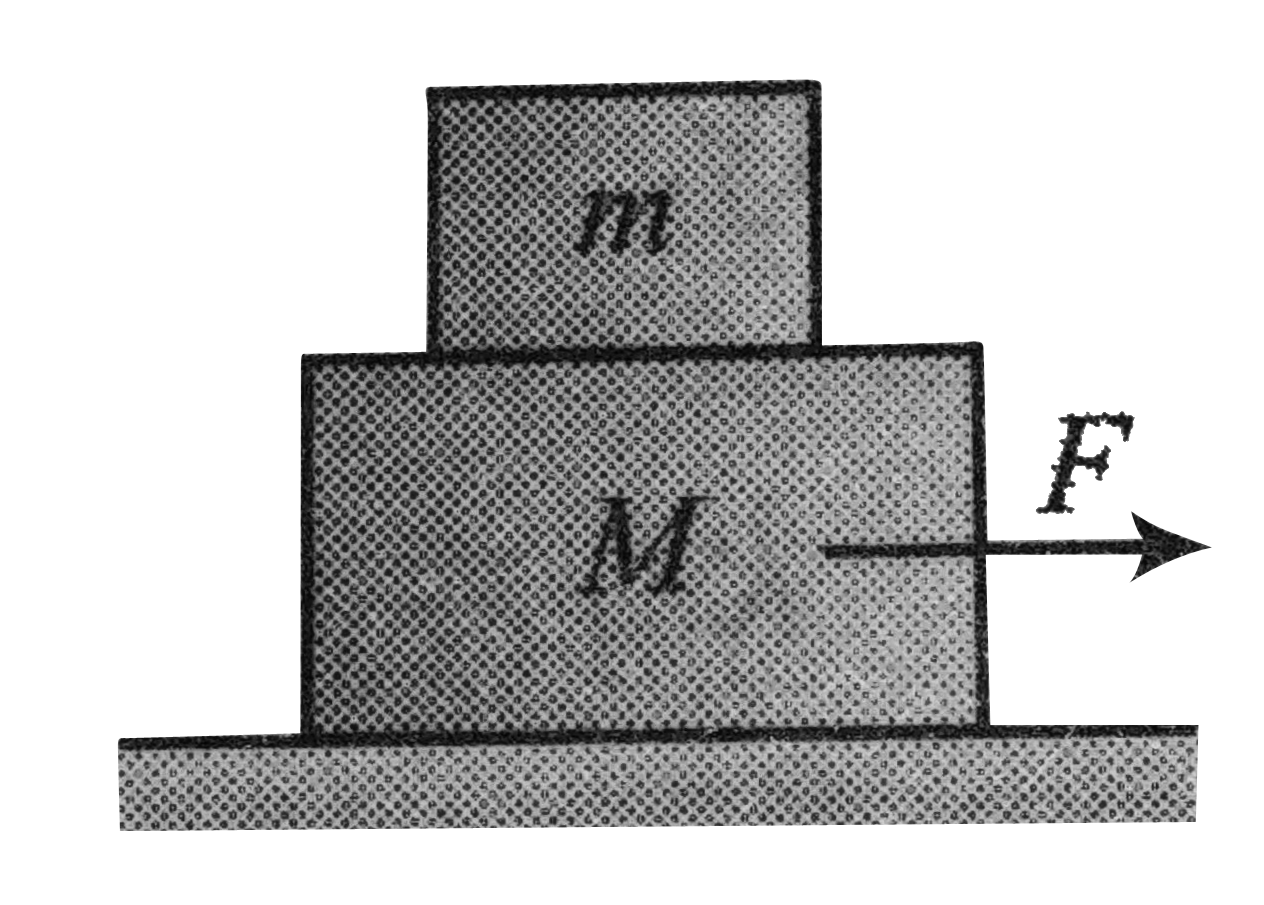
As both blocks move together, there will be static friction betweem m and M. The friction between M and ground will be kinetic in nature. Common acceleration, a=F2(m+M)
a. As both block moves together, we can take m and M as a system. Let friction between M and ground is fM.
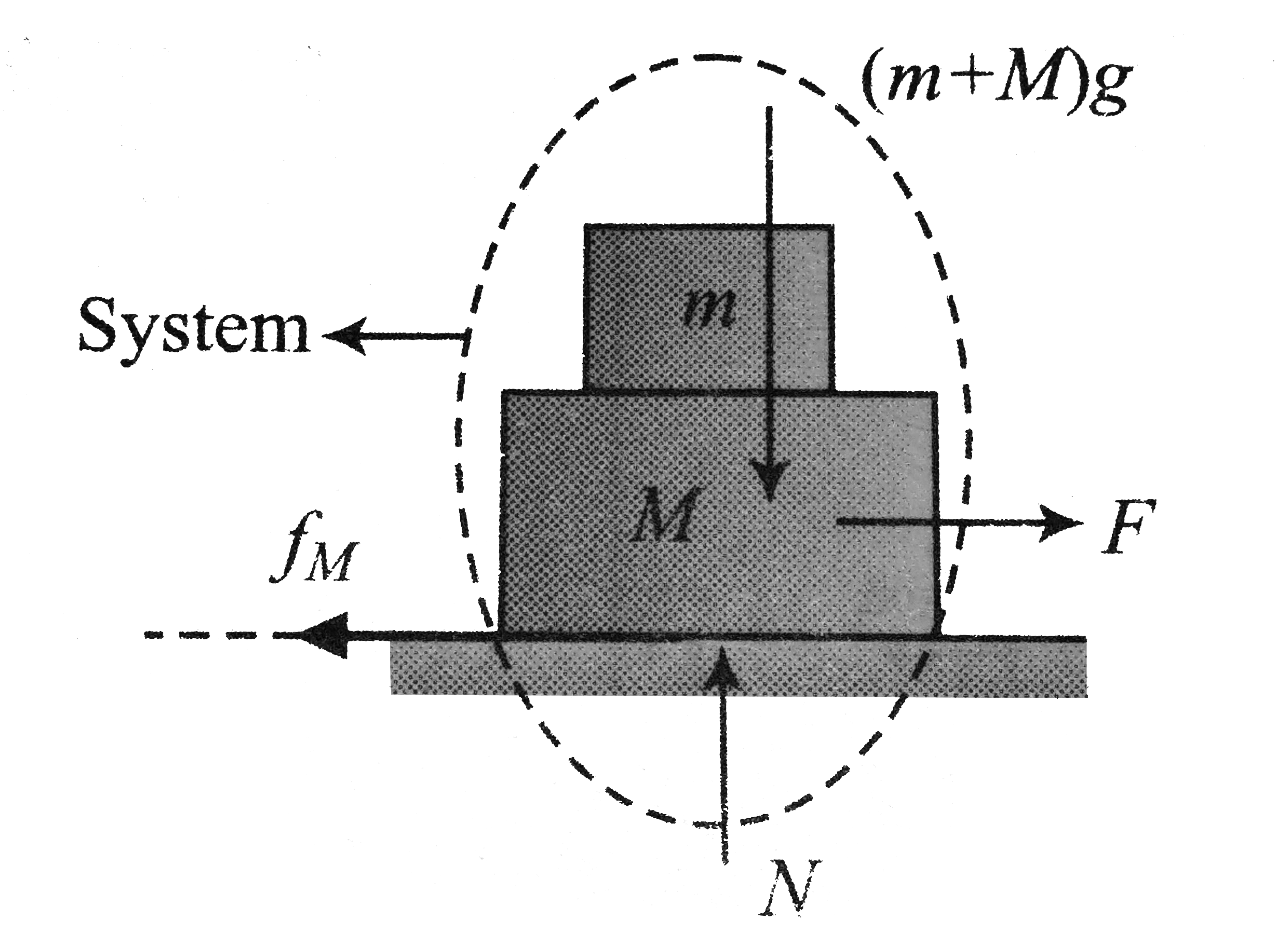
From free body diagram of m+M
Equation of motion: F−fM=(m+M)a
or fM=(m+M)F2(m+M)
⇒fM=F2
b. Work done by friction on bigger block,
(Wf)M=→fM⋅→d=−fMd=−F2⋅d
As friction between M and ground is kinetic, then
fM=μN
F2=μ(m+M)g⇒μ=F2(m+M)g
c. Considering the free body diagram of m
fs=ma
fs=mF2(m+M)=Fm2(m+M)
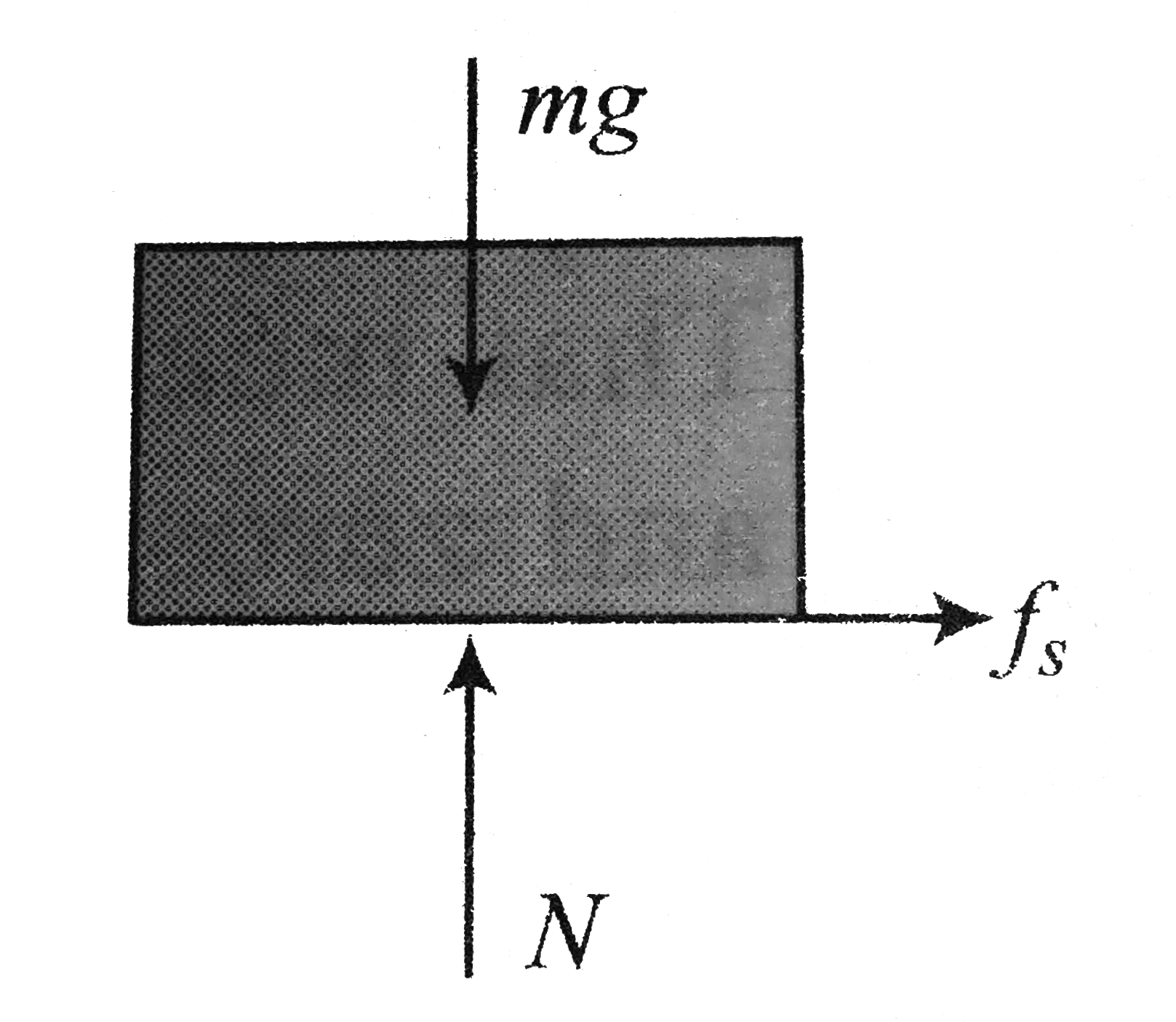
d. Work done by friction force on smaller block by bigger block
(Wfs)m=→fs⋅d
=fs⋅d
=(Fm2(m+M))d
=Fdm2(m+M)
e. Net work done by static fricition on a system is zero.
(Wfs)m=(Wfs)M=0
[Fdm2(m+M)]+(Wfs)M=0⇒(Wfs)M=−Fdm2(m+M)
Topper's Solved these Questions
- WORK, POWER & ENERGYBOOK - CENGAGE PHYSICSCHAPTER - WORK, POWER & ENERGYEXERCISE - Solved Examples
15 Videos
- WORK, POWER & ENERGYBOOK - CENGAGE PHYSICSCHAPTER - WORK, POWER & ENERGYEXERCISE - Exercise 8.1
25 Videos
- VECTORSBOOK - CENGAGE PHYSICSCHAPTER - VECTORSEXERCISE - Exercise Multiple Correct
5 Videos
Similar Questions
A block of mass m is kept over another block of mass M nd the system rests on a horizontal force F acting on the lower block produces an accelertion F2(m+M) in the system the two blocks always move together. A. Find the coefficient of kinetic frictioin between the bigger block and th horizontal surface. b. find the frictional force acting on the smaller block. c. Find the work done by the force of friction on the smaller block by the bigger block during a displacement d of the system.
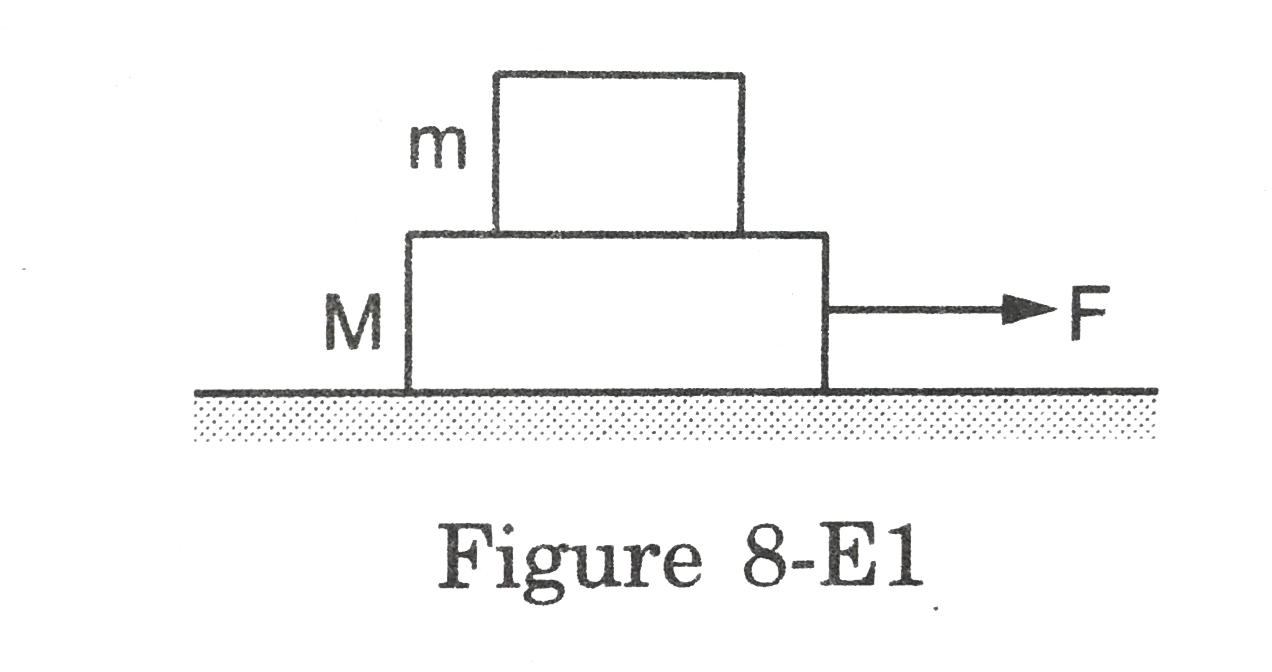
View Solution
Consider the situation as shown in the figure. A constant horizontal force 45 N acting on the lower blocks produces an acceleration 4(m)/(s2), the two blocks always move together. Find (a) coefficient of friction between the bigger block and the horizontal surface (b) friction acting on the upper block and (c ) work done by the friction on the upper block during a displacement 2m of the system.
View Solution
Knowledge Check
A wooden block of mass M resting on a rough horizontal surface is pulled with a force F at an angle with the horizontal. If is the coefficient of kinetic friction between the block and the surface, then acceleration of the block is -
AFM(cosϕ+μsinϕ)−μgBFsin(ϕ)MCμFcosϕD,uFsinϕ
A block of mass m is kept over another block of mass 2m and the system rests on a smooth horizontal surface. The coefficient of friction between the block is 0.50. Find the work done by the force of friction on the smaller block by the bigger block during a displacement the of the system when a force mg is applied to the lower block
View SolutionA block of mass m is stationary with respect to the wedge of mass M moving with uniform speed v on horizontal surface. Work done by friction force on the block in t seconds is
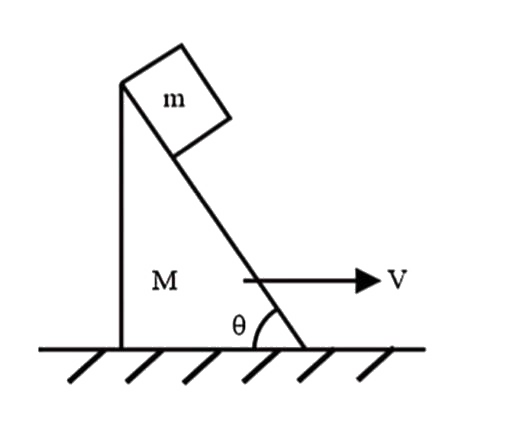
View SolutionA block of mass m is kept on a horizontal table. If the static friction coefficient is μ., find the frictional force acting on the block.
View SolutionTwo blocks of Masses M and 2M are connected by a spring of stiffness k .The coefficient of friction between the blocks and the surface is mu Find the minimum constant force F to be applied to 2m in order to slide the mass M .
View SolutionA block of mass 1 kg lies on a horizontal surface in a truck. The coefficient of static friction between the block and the surface is 0.6. If the acceleration of the truck is 5m/s2, the frictional force acting on the block is…………newtons.
View SolutionA block of mass m is kept over another block of mass 2m. Coefficient of friction between two blocks is μ and that of between lower blood from the horizontal surface is zero. A horizontal force F=43μmg is applied on the block of mass 2m. Acceleration of lower block is
View SolutionFind the acceleration of the block of mass M in the situation of figure. The coefficient of friction between the two blocks is μ1 and that between the bigger block and the ground is μ2.
View Solution